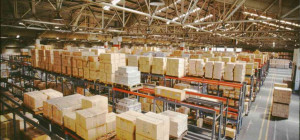Electricity tariffs refer to the rates or charges that consumers pay for their electricity usage. These tariffs can vary widely depending on factors such as the location, type of customer (residential, commercial, industrial), time of day, and the amount of electricity consumed. Electricity tariffs are typically set by regulatory authorities or utility companies and are designed to cover the costs of generating, transmitting, and distributing electricity, as well as to provide a reasonable return on investment for utility providers.
There are several types of electricity tariffs, including:
- Flat Rate Tariffs: Under this type of tariff, consumers pay a fixed rate for each unit of electricity they use, regardless of the time of day or overall consumption. This is a straightforward pricing model and is often used for residential customers.
- Time-of-Use (TOU) Tariffs: TOU tariffs involve varying rates based on the time of day or day of the week. Electricity may be more expensive during peak hours (when demand is high) and cheaper during off-peak hours (when demand is lower). This pricing structure encourages consumers to shift their electricity usage to off-peak hours to reduce costs and manage grid demand.
- Tiered Tariffs: Tiered tariffs involve different rates for different levels of electricity consumption. Consumers are charged at a lower rate for a certain amount of electricity, and once they exceed that threshold, they are charged at a higher rate. This model aims to incentivize energy conservation by rewarding lower consumption.
- Demand Charges: Demand charges are often applied to commercial and industrial customers. They are based on the peak level of electricity usage during a specific period, typically measured in kilowatts (kW). Customers with higher peak demand levels may incur higher charges to account for the strain placed on the electrical grid during those times.
- Renewable Energy Tariffs: Some regions offer special tariffs for electricity generated from renewable sources such as solar or wind. These tariffs may provide financial incentives or discounts to encourage the use of clean energy sources.
- Net Metering: Net metering allows consumers who generate their own electricity, usually through solar panels, to receive credit for any excess energy they produce and feed back into the grid. Their electricity bills are reduced by the amount of energy they supply.
As a business owner, you are always looking for ways to cut costs and improve your bottom line. One significant expense for many businesses is electricity usage. As the economy continues to grow, the demand for energy continues to increase, thereby causing soaring electricity tariffs. This has made electricity a more substantial cost in many businesses’ operating budgets.
However, with the right strategies, you can negotiate better electricity tariffs and save considerable amounts of money. Negotiating better electricity tariffs in today’s market can be a daunting task, especially for businesses that lack the right information and data to back up their cases. But if you compare business electricity tariffs, investigate your current provider’s pricing structure, and negotiate a better rate, you can potentially save yourself significant money.
Research Current Electricity Tariffs and Rates
One of the key strategies for negotiating better electricity tariffs for your business is to start by researching current electricity tariffs and rates. This is an important step in identifying what your business is currently paying and whether or not you are being charged appropriately. You can gather information on the latest electricity tariffs and rates from several sources, including your utility provider, government energy regulatory agencies, and even review websites.
By conducting this research, you can identify any discrepancies between what you are paying and what other businesses in your area are paying for the same amount of energy. This can be invaluable information when entering into negotiations with your utility provider or energy broker, as it sets a benchmark for what you should be paying for your business’s electricity consumption.
Assess Your Business’s Energy Usage Patterns and Needs
Assessing your business’s energy usage patterns and needs is a crucial step toward negotiating better electricity tariffs for your business. Gathering data on your energy usage patterns will enable you to evaluate the potential savings that can be attained by changing your current electricity plan. In addition, identifying the peak and off-peak periods of energy usage will help you determine the best time to negotiate with your energy provider. It is recommended that you evaluate your current energy consumption and the factors that contribute to it, including your production processes, machinery, and lighting systems.
This will help you determine the amount of energy your business requires and identify areas where energy efficiency can be improved, resulting in significant cost savings. By gathering robust data on your energy consumption and usage patterns, you will be better equipped to make informed decisions regarding electricity tariffs and successfully negotiate better rates tailored to your business’s energy requirements.
Compare Offers From Different Energy Providers
One effective strategy for negotiating better electricity tariffs for your business is to compare offers from different energy providers. It is crucial to understand the energy market and analyze the offers of various providers to identify the most suitable option for your business. This can involve reviewing the rates, contract terms, and additional services offered by each provider.
Once you have identified the best option for your business needs, you can then negotiate with the energy provider for better rates, discounts, or additional services. Negotiating with energy providers is a critical step in reducing your business expenses and increasing your profitability. A successful negotiation can lead to significant savings in electricity expenses, which can be reinvested to grow your business.
Consider Alternative Energy Sources and Efficiency Measures
One strategy to negotiate better electricity tariffs for your business is to consider alternative energy sources and efficiency measures to reduce usage and costs. Renewable energy sources such as solar, wind, and geothermal can significantly reduce your reliance on traditional electricity sources and often have lower operating costs in the long run.
Additionally, implementing energy-saving measures such as upgrading to energy-efficient lighting, HVAC systems, and insulation can also reduce your overall energy consumption and lower your bills. These measures can also result in tax incentives and rebates from government and utility companies, further reducing your energy costs. By exploring these options, your business can not only save money on electricity bills but also improve its sustainable practices and reputation.
Monitor and Review Your Energy Bills Regularly
Monitoring and reviewing your energy bills regularly is an important strategy for negotiating better electricity tariffs for your business. By keeping a close eye on your bills and tracking your energy usage, you can quickly identify areas where you may be wasting energy or overspending on your electricity bill.
Reviewing your energy bills can also help you to identify opportunities for energy efficiency and cost savings, such as upgrading to more energy-efficient appliances or changing the times at which your business uses energy. By regularly monitoring and reviewing your energy bills, you can ensure that you are getting the best possible deal on your electricity tariff and avoid overpaying for your energy usage.
How to Negotiate a Better Rate With Your Current Provider
If you are already working with an energy provider, there are still strategies that you can use to negotiate a better rate and lower your electricity bills. When negotiating with your current provider, it is important to be clear about the terms you want and communicate what value you can offer in return for improved rates or services.
It may also be beneficial to negotiate with your current provider if they offer additional services such as energy audits or efficiency measures. By investing in these services, you can reduce your energy usage and save money on electricity costs over the long term. Additionally, it is important to research the market and compare offers from other providers so that you have a clear understanding of the rates you should be expecting from your current provider. By working with your current provider to negotiate a better rate, you can save money and ensure that you are getting the best value for your energy needs.
In Conclusion
Negotiating better electricity tariffs for a business may seem daunting at first, but with careful planning, research, and the right negotiating techniques, it is possible to achieve significant long-term savings. By taking the time to assess their energy usage and explore different tariff options, businesses can leverage their energy consumption to secure better rates and more favorable contract terms from suppliers. With electricity costs expected to continue rising in the coming years, now is the time for businesses to take action and start negotiating better tariffs that will help to drive down costs and improve overall operational efficiency.







